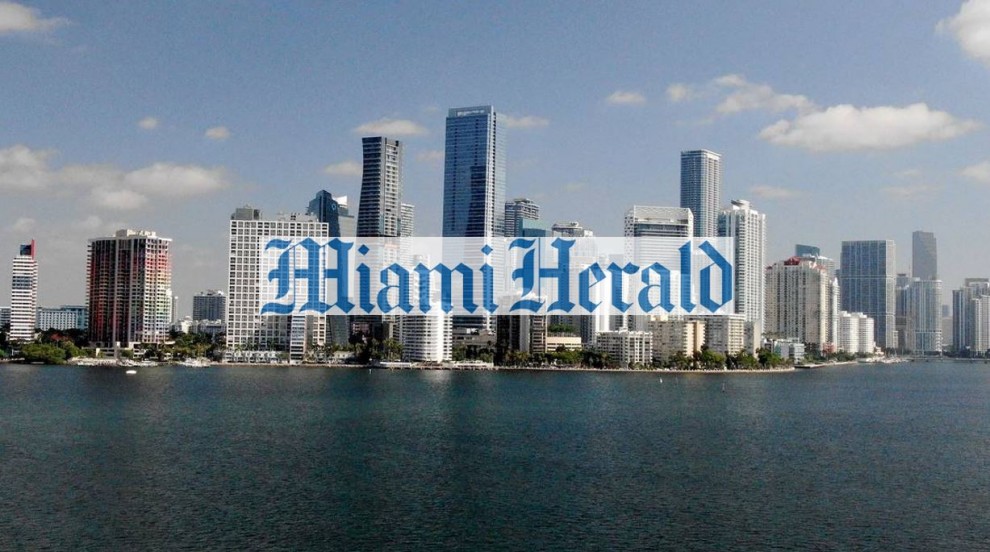Measures to contain the spread of coronavirus continue to shift — and so do responses by investors, developers, builders, banks and buyers. To track the impact, RE|source Miami is asking area real estate professionals in various sectors for on-the-ground reports.
Today we hear from Todd Rosenberg, co-founder of the Boca Raton-based Pebb Capital. Rosenberg established the development and private equity investment firm in 2014 after working for the family-owned investment firm PEBB Enterprises, established in 1973 by Rosenberg’s grandfather. Pebb Capital’s portfolio includes 60 properties across South Florida and New York totaling about $1.5 billion in asset value. Projects include the completed Muse Condominiums in Sunny Isles Beach, Echo Brickell and the co-living project Society Las Olas in Fort Lauderdale, now under construction. The firm also owns student housing in Florida, Georgia, Arkansas. Kansas and New York.
Q: How has the pandemic influenced investment opportunities and activity in South Florida?
While the pandemic will undoubtedly change certain aspects of life and investing, we view it more as an accelerator of trends that were already occurring. This acceleration can be seen in hastened retail bankruptcies, utilization of online virtual office technology for corporate America, higher education disruption and interstate migration patterns.
South Florida is one of the unintended beneficiaries of the pandemic. While the concept of people and businesses moving from dense, high-tax, cold-weather cities in the Northeast and Midwest to South Florida and the “smile belt” is nothing new, due to the forced utilization of virtual office technology and the realization of its potential efficiencies, we expect an uptick in this well-trodden path post-COVID, as people and businesses seek more space and a lower cost of living in full-year, warm weather climates, away from the aforementioned gateway markets. This will inevitably increase the dispersion of high-paying jobs across the country — many of which should land in South Florida. These trends should buttress demand for a variety of uses in our market. We would expect investors to target short term dislocations in all asset classes, understanding the long-term viability of growth potential and “post-COVID” discounts.
Q: How might the pandemic influence demand for co-living projects, and why?
The concept of creating communities of similar-minded, similar-aged residents, and matching roommates within efficiently designed, furnished units is a concept that is here to stay because it enables residents to enjoy a sophisticated lifestyle at an achievable monthly rent level through smaller unit sizes. However, we believe that over-densifying a property with a high concentration of three and four-bedroom-plus units or double occupancy bedrooms is a trend that is likely to be behind us. Depending on the resulting migration out of dense urban cores, we may also see a slowing of new co-living developments. We would expect new developments to focus on larger concentrations of smaller studios, and one and two-bedroom units with bed and bath parity. Regarding amenity trends in co-living projects, we expect to see a maximization of outdoor space, and a reduction or removal of communal kitchens and high-traffic indoor amenity space.
Q: How might the pandemic influence demand for student housing?
The outlook for the higher education industry cannot be painted with one brush. De-densification of on-campus housing will take beds offline, creating a vacuum for private housing to fill at well capitalized, private or national public universities, with consistent or growing demand and low acceptance rates. On the other end of the spectrum are over-levered universities without a clear value proposition, heavily dependent on international students, with high acceptance rates, or some combination thereof. The pipeline of developments may slow at those schools as graduating high school seniors consider the year ahead and whether they will attend college, take a gap year, jump straight into the workforce or stay close to family and start at community college. Obtaining construction financing is also likely to be more challenging over the next year, constraining development.
University enrollment tends to behave counter cyclically, increasing in a recession as people head back to school to retool. Similar to our views on co-living, we expect this cohort to exhibit strong preference for studio and one-bedroom units away from dense three to four-bedroom-plus units that have flooded many Florida markets.
Q: South Florida’s Opportunity Zones have produced little development activity thus far. How might the pandemic influence activity moving forward and why?
Opportunity Zone tax benefits remain attractive for long-term investors. We expect more aggressive gentrification across South Florida as a result from accelerated post-pandemic migration. Florida led the country in migration pre-COVID, with the potential for urban sprawl in South Florida constrained between the Ocean and the Everglades. As more people and companies relocate to Florida, driving demand for the spectrum of real estate sectors, we expect investment in gentrifying neighborhoods to increase, which will have a symbiotic relationship with the Opportunity Zone program.
Q: What three factors will influence real estate investors and developers looking to acquire real estate in South Florida in the next three months?
The key drivers of South Florida real estate remain consistent pre or post-COVID: Migration of people and businesses, favorable climate and all-year outdoor lifestyle, and low-tax and business-friendly environment.

